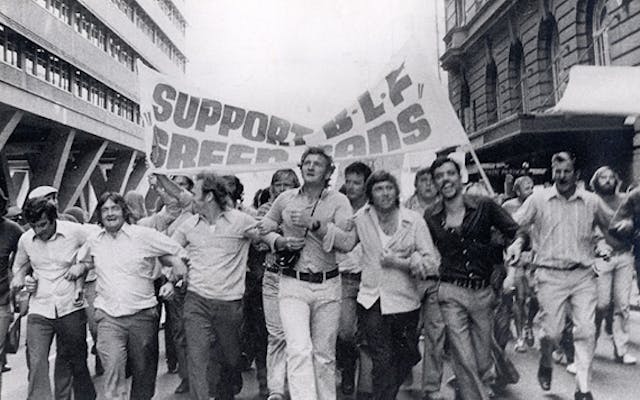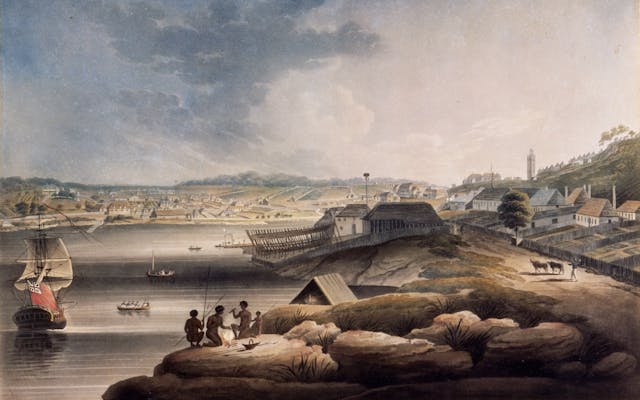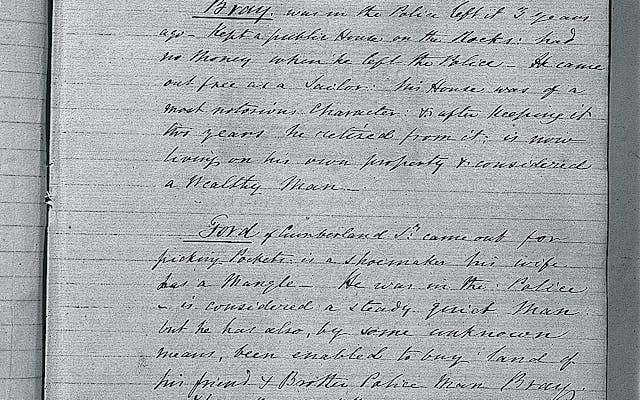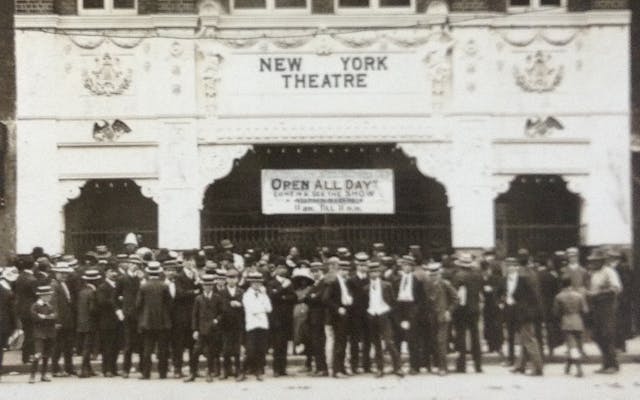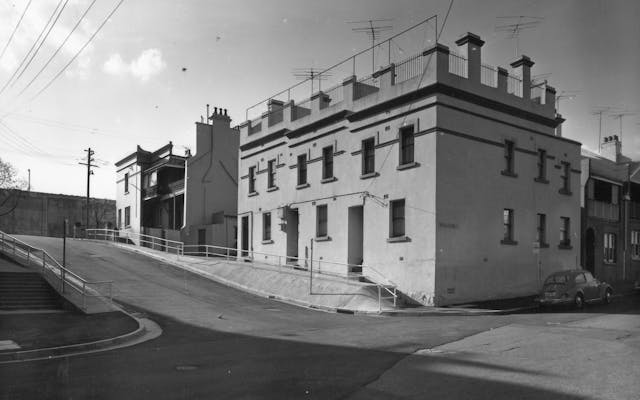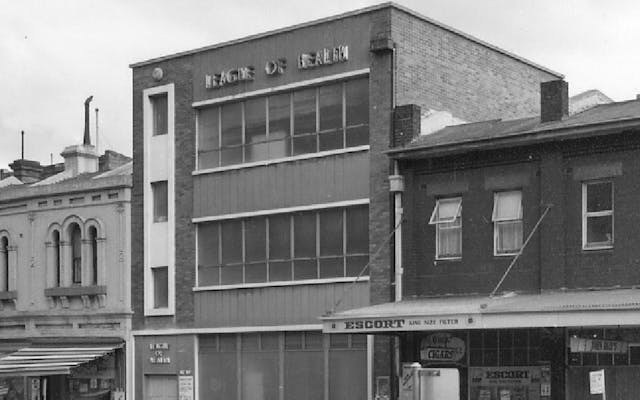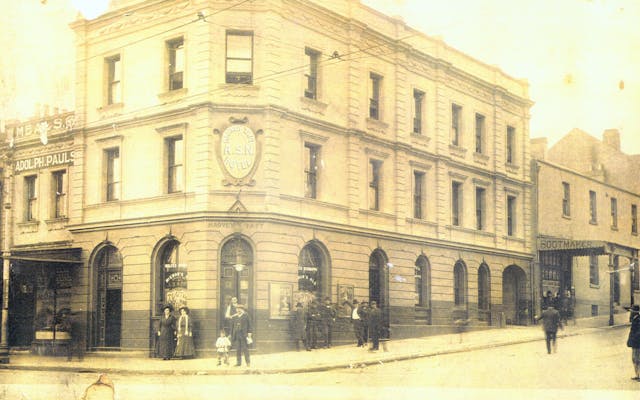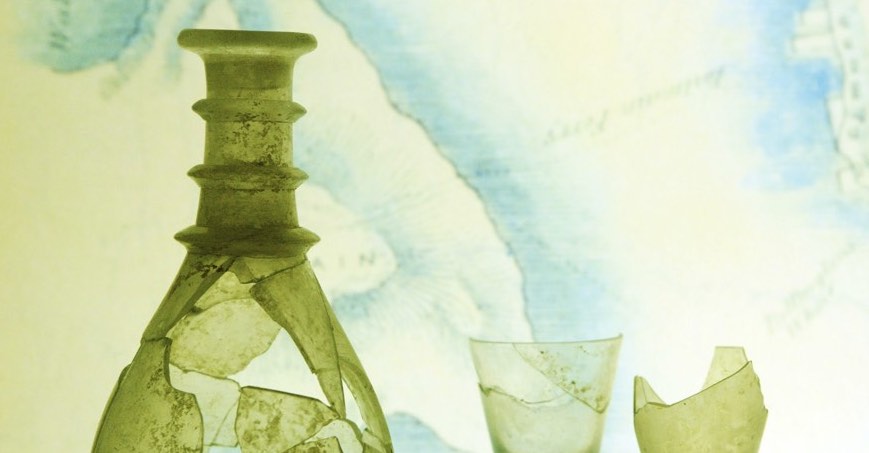The Butters Plan of 1938 proposed the construction of Circular Quay Railway Station and elevated railway, and rebuilding the ferry wharves. The plan significantly required the demolition of Sydney’s earliest surviving public buildings, the 1809-12 Commissariat Stores, which was to spark furious debate in the State’s newspapers regarding protection, and definition, of national heritage.
A Call to Protect our Heritage: Demolition of the Commissariat Stores, 1939
Ever since the New South Wales Government had resumed the harbourside real estate of The Rocks and Circular Quay following the Bubonic Plague scare in 1900, plans had come and gone for the urban renewal of this major gateway to Sydney.
In 1937, a commission for the renewal of Circular Quay, headed by Sir John Butters, handed down its findings in what is generally known as the Butters Plan for the redevelopment in and around Sydney Cove, and which included the construction of Circular Quay Railway Station and elevated road & railway, construction of new offices for the Maritime Services Board, and the rebuilding of the ferry wharves. Significantly, the plan, with some reticence, called for the demolition of Sydney’s earliest surviving public buildings, the 1809-12 Commissariat Stores:
It is with some reluctance, and only after considerable thought, that the Committee recommends the removal of the old Taxation Building and the old Naval Store (Commissariat Stores). These buildings, while having no outstanding architectural merit, have an historical and sentimental value, being associated, as they were, with the early life of the Colony. However they stand in the way of a satisfactory rehabilitation of this portion of the Quay area and the replanning of the adjacent lands. (Department of Public Works; Report of Observatory Hill Resumed Area Development Committee, 1937, p9)
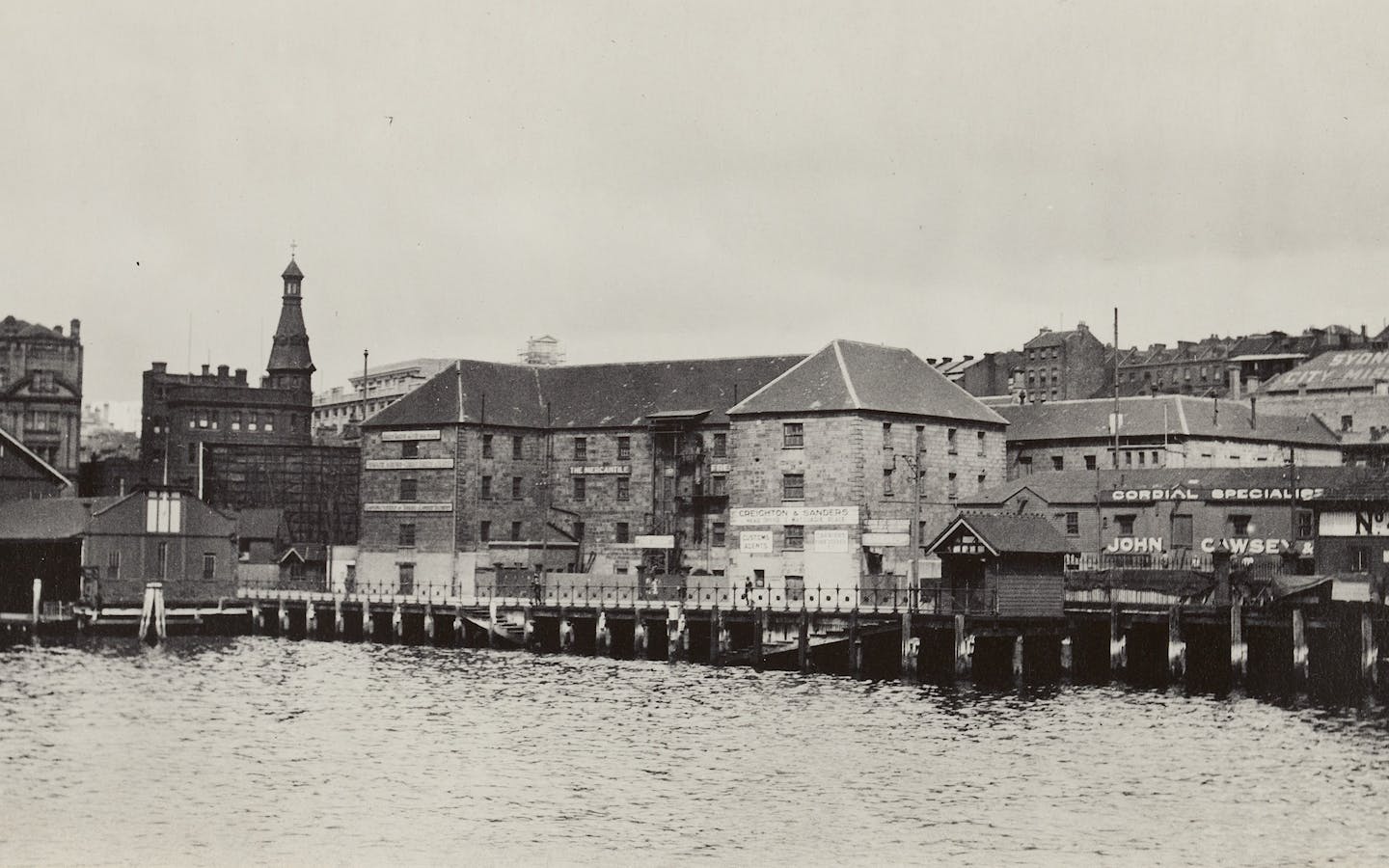
The Herald strongly objected:
The loss of these two landmarks, linking the city with the infant settlement of 127 years ago, will be deplored by every public-spirited citizen. Even now, it is not too late to seek a modification of this section of the Butters Plan.
The worst thing was that these buildings were not to be replaced and demolition was ‘solely for the purpose of laying out the land on which they stand in grass and shrub’ as part of:
A mysterious process called beautification. (SMH 24 Jan 1939)
On the other side, money was a consideration and the Secretary of the Circular Quay Association publicly berated the NSW Government for its inactivity in realizing the Scheme citing the decline in property values in The Rocks. ‘The Maritime Services Board receives £40,000 in revenue from the properties it had owned since 1900 and expends that amount in maintenance. Some properties return as little as £1 per week in rent, whilst the unimproved value of the real estate is more in the realm of £200 per foot’. (SMH 16 Aug 1939)
But there were stronger emotions at play, concerned with Sydney’s penal origins: John Street, honorary secretary of the Howard Prison Reform League, declared that buildings associated with Australia’s convict past should be demolished. The Herald reported an exchange between him and Athol Richardson, the Minister for Social Services:
Convict buildings, said Mr Street, exercised a sinister influence on the community. Crime had practically ceased at The Rocks since the old convict-built buildings there had been razed to make way for the Harbour Bridge.
Mr Richardson: We have had deputations from other people who asked that the immigration buildings and other old buildings should be preserved.
Mr Street: The people who asked that knew nothing about subtle occult laws. Since the Rocks were cleaned up the crime centre has moved to Darlinghurst, where there is an old gaol.
This argument was vigorously countered in a letter from Mr I.G. Hill of Killara:
I was surprised to see that so prominent a man as Mr John B Street should urge the Philistinistic destruction of the few remaining buildings in Sydney which are not an eyesore. Where do our modern buildings stand in beauty, proportion, and conformity of line, with the old Macquarie buildings? As for referring to their ‘occult influences’, in this practical age such absurdities should not be permitted to waste the time of our busy MsP… I know personally many old Sydney families who have been born and brought up in convict-built homes, and have proved some of our best and most reliable citizens for generations. (SMH 14 Oct 1938)
I know personally many old Sydney families who have been born and brought up in convict-built homes, and have proved some of our best and most reliable citizens for generations. (SMH 14 Oct 1938)
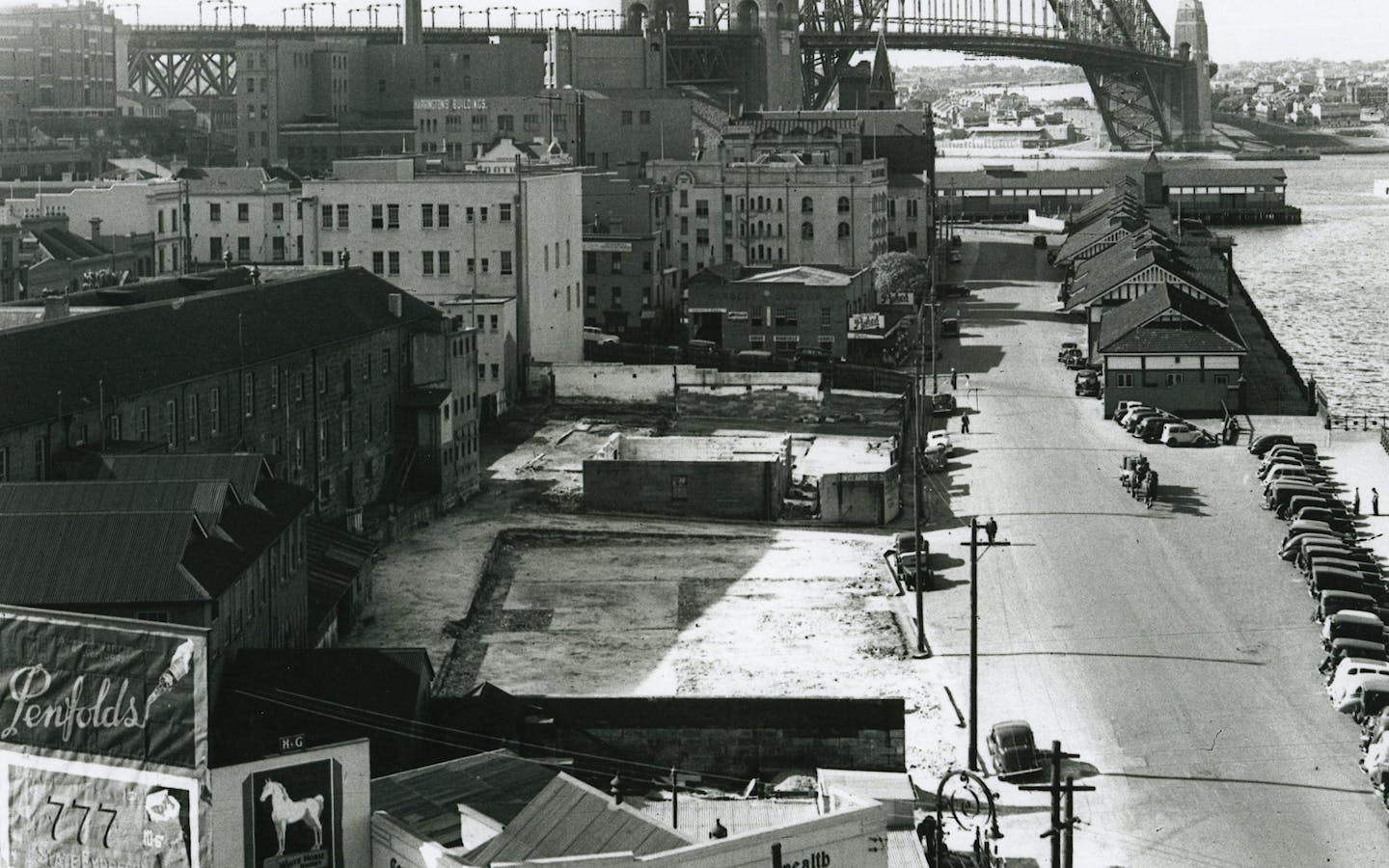
Three days later another reader argued against their significance, including that of Hyde Park Barracks, which was also under threat of demolition to make way for new law courts:
There are no old buildings in Sydney which could be preserved on account of their beauty or even for their supposed Macquarie design. All these old barns are merely out of date and can never be antiquities. Certain old buildings at Circular Quay are certainly reminiscent of olden days but they are useless monstrosities. Just the same words fail to describe that shocking old barracks at the top of Macquarie Street which is a replica of many such buildings in England (clock and all) and which has nothing colonial about it. This place made of brick and iron will shortly become a menace, and should be considered accordingly.
James Houison, honorary secretary of the Royal Australian Historical Society entered the debate on 4 February 1939:
The overhead road and railway will not come near [the Stores]. They are to be destroyed to make a spacious park, in the middle of which will be erected a building to accommodate the Maritime Services Board. Surely there is ample space at the Quay to provide a new site for the Maritime Building without touching these interesting relics of early Sydney?...These two ancient structures are two of the best examples of Macquarie buildings now remaining in the State. … Everything possible should be done to preserve them.
He was joined by artist Sid Long whose association with buildings in The Rocks extended back to the 1902 exhibition, and who more recently had produced an etching of the Commissariat Stores:
It will be a wicked shame if they are pulled down. … At present they make a wonderful appeal for anyone possessing a feeling for the beauty of old things. Not only does the Butters scheme involve the destruction of the old Taxation Building and Commissariat Stores, but it also involves the destruction of the original cottage [Cadmans] which used to accommodate the boatmen who to ferried the citizens across the harbour in the early years of last century. Few people know of its existence because it is hidden from view by the old Macquarie wall. … I came across it about seven or eight years ago when I was making an etching of the old buildings as they appeared from the waters of Sydney Cove.
The final word went to Sir Archibald Howie, MLC, Lord Mayor of Sydney from 1936 to 1937:
I would like to see these buildings pulled down, and the sooner the better. There is nothing artistic about them, and the fact that each stone used in their construction bears the initials of a convict is a very good reason why we should forget about them. No. It would be impossible to obtain a beautification scheme for the Quay as long as those old buildings remain there. You might as well try and preserve beauty in a quarry.
Demolition commenced on 5 July 1939. In its final stages a letter by Patricia Clarke Mowle called for greater protection for historical buildings:
As individual protests against the demolition that is now taking place would be futile, it therefore seems that the time has arrived to form a society for the preservation of historic buildings, and thereby enable a collective opinion to be represented in the proper quarter upon this and other acts of vandalism that will assuredly occur.
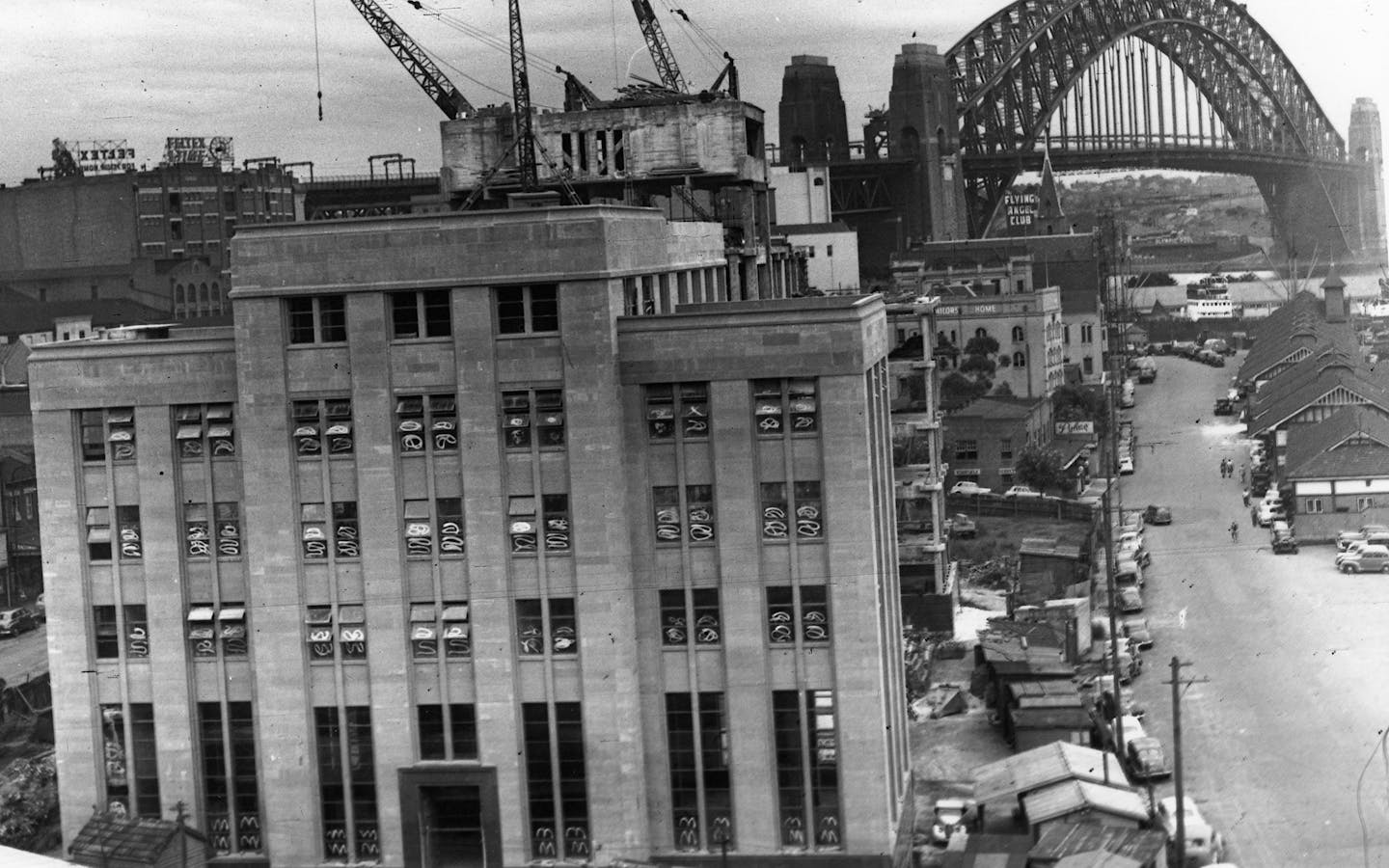
During the demolition of the Commissariat Stores, Australia was plunged into World War II and the site was to remain vacant for some years as construction of the new Maritime Services Board Building slowed to a halt. Work recommenced in 1946 and the offices were finally completed and occupied in 1953. Thirty-seven years later that building became the Museum of Contemporary Art.
The 1890s Fire Station with its domed spire and the former Sydney Harbour Trust building were in the direct path of the Circular Quay railway but were not demolished until the mid-1950s. The foundation stone of Macquarie’s 1812 building had been retained at the request of the Royal Australian Historical Society. It, along with a bronze bust of Governor Phillip, was later installed nearby as a memorial.
Since the early 2000s proposals have once again been put forward for the improvement of Circular Quay and the ferry wharves, and often the same arguments both for and against have been raised.
At the end of World War II, in 1945, the NSW National Trust was formed to advocate for the preservation of historic sites and buildings. It was not until 1977 that New South Wales adopted the NSW Heritage Act to preserve items considered of historical and cultural, as well as architectural, significance.

